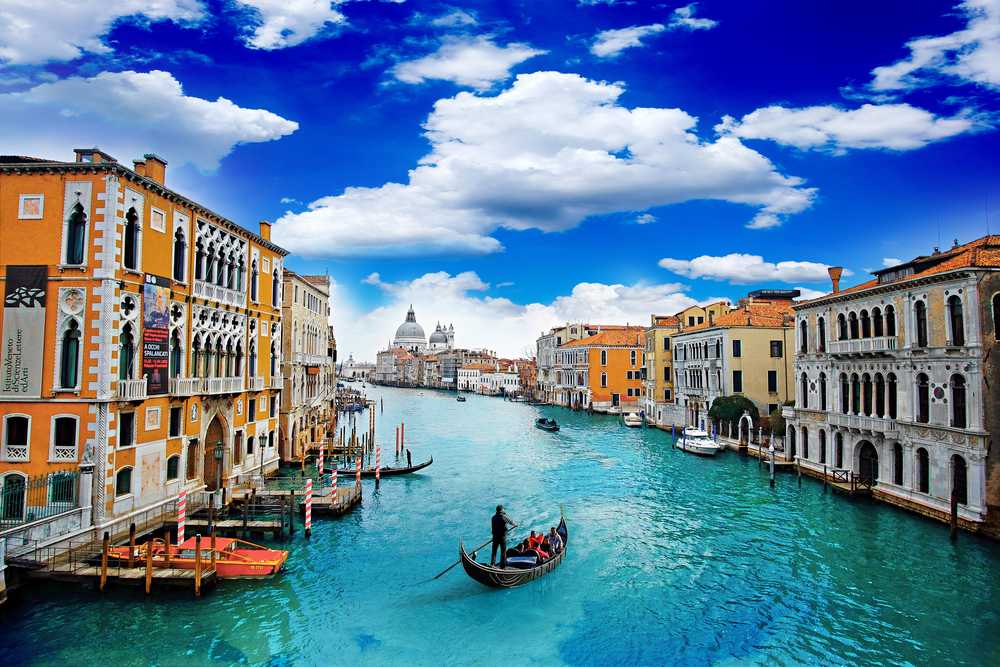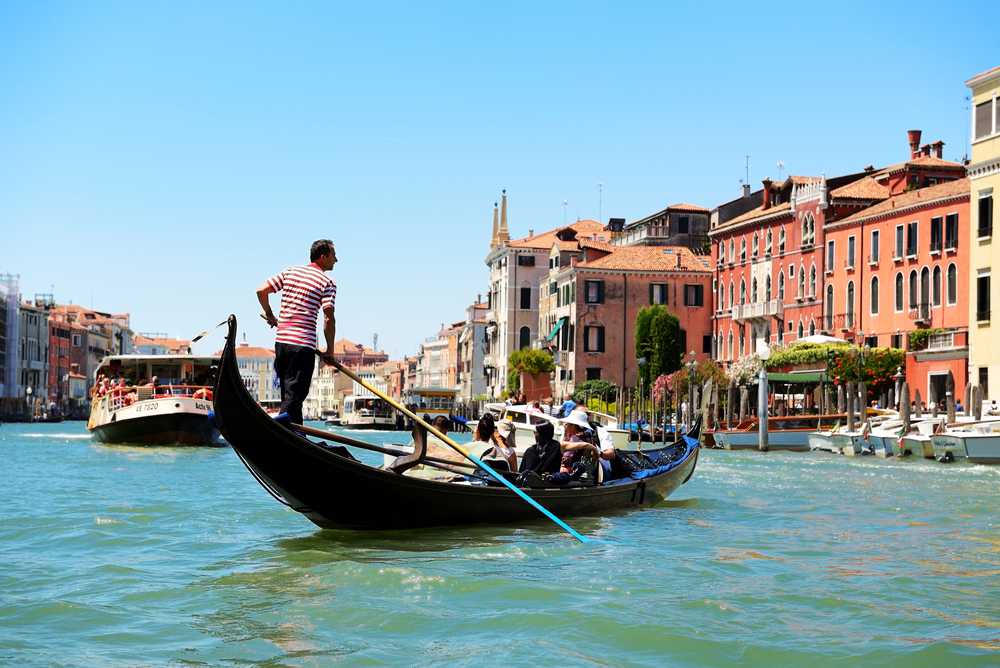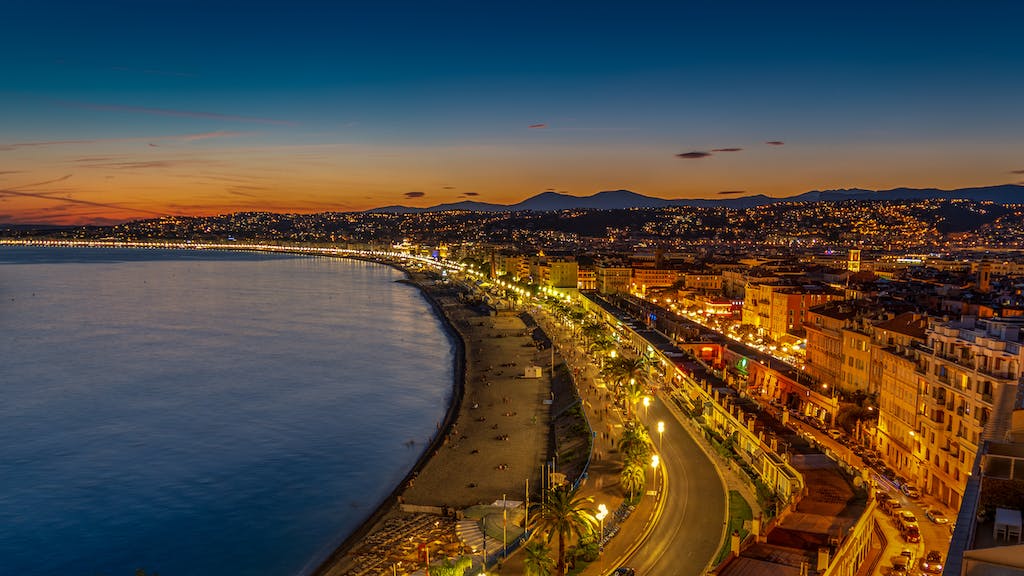Venice is a city of more canals than streets; the city has about 400 licensed gondoliers. This group keeps a vital tradition of the Venice gondola heritage alive. Let me share the fascinating history of gondolas in Venice. It’s a tale of evolution, craftsmanship, and cultural importance that symbolizes the city. Taking a gondola ride is one of the best attractions in Venice.
Gondolas are sleek, elegant, and more than just a way to get around. They have been a part of Venice for over a thousand years. The origins of the Venetian gondola trace back to the city’s rise from the sea. These rowing boats show Venice’s art and engineering skills over the centuries.
Taking a gondola ride is like traveling back in time. Each row of the oar tells an ancient story. Explore the Venetian gondola as a witness to their silent trips down the Grand Canal. It’s a symbol of Italian culture. Plus, find out what a ride costs and who pilots your boat. Discover how gondoliers become masters of this age-old craft.
What is a Venetian Gondola?

When one thinks of Venice, images of the elegant Venetian gondola naturally come to mind. These Venice gondola rides glide gracefully across the narrow canals of Venice. They are not just for travel; they are also a piece of floating history and culture. Each detail tells a story of traditional Venetian gondola history and Venetian gondola craftsmanship, passed down through generations.
The gondola’s sleek, black silhouette is iconic. But it’s not just about looks. The design of these vessels prioritizes strength and flexibility. This balance of beauty and practicality exemplifies Venice’s deep gondola roots. Over centuries, they perfected their design to navigate the unique conditions of the Venetian lagoon.
The Elegance and Functionality of Venice’s Iconic Vessels
The elegance of Venice struck me as I took a ride on a gondola through its constrained canals. The sleek, black boat with its curved hull seemed to move effortlessly through the water. But its beauty is more than skin deep.
Over the centuries, gondola design has evolved to perfectly suit its environment. The flat bottom allows it to navigate the shallow canals, while the asymmetrical oar at the back ensures maneuverability in tight spaces. I watched in fascination as the gondolier expertly steered the boat, his movements precise and graceful.
Experiencing Venice by gondola was a truly unique way to see the city. It was a journey through history, a testament to human ingenuity, and a reminder of the beauty that can be found in both form and function.
Gondola Design and its Adaptations Over Time
According to one beautiful Venetian, the gondolas have changed shape over the years to suit the changing Venice. They used to be bigger and more decorative. Now, they’re made for quick movement. This change tells a story about their important role in Venetian life and transport. It’s all about the journey of gondola design evolution.
Seeing a gondola’s construction up close, it’s clear it’s a work of art. It combines detailed woodworking, marine knowledge, and beauty. Making a gondola requires skill and tradition, evident in every part.
Building a gondola in Venice is a tradition-filled process. It starts with choosing the right wood. Each type of wood adds something special to the gondola’s function. About 280 pieces come together in this complex process. It can take a whole year, demonstrating the artisans’ dedication to Venetian gondola craftsmanship.
Medieval Greek and Latin Influences on Gondola Evolution
Delving deeper, the gondola’s name whispers of its rich history. With roots in the ancient Greek word ‘kondura’ and the Latin ‘cymbula,’ it hints at the design influences that shaped this iconic vessel. This subtle name change reflects the vibrant cultural exchange that has always been a hallmark of the Mediterranean.
The gondola’s historical significance in Venice is undeniable. These vessels have evolved alongside the city itself, transforming from basic transportation to cherished symbols of Venetian culture and identity. Their enduring presence speaks volumes about their enduring utility and timeless elegance.
Gondola Design Evolution
The gondola’s design is a lesson in balance. Its right side sticks out more than the left. This helps the gondolier steer better.
This design twist is practical, not just pretty. It lets the gondola glide straight with only one oar. Gondolas reflect Venice’s culture as much as its waters do.
Materials and kinds of wood in gondola construction
As I ran my hand along the smooth surface of a gondola, I could almost feel the story etched into its wooden grain. Gondolas, unlike any other boat, weave marsh reeds between the planks, a technique I learned that strengthens the wood and enables it to withstand constant water exposure. It’s a testament to the ingenuity of Venetian shipbuilding.
The complexity of the gondola’s construction was astounding. Over 280 pieces, each crafted from one of eight different woods, come together to form this elegant vessel. It’s a beautiful marriage of form and function, a perfect reflection of Venice itself.
But a gondola isn’t just a work of art; it’s a key to unlocking Venice’s soul. The moment I stepped into one and glided through the canals, I felt a connection to the city’s rich history. It was like being transported back in time as a participant in the Venetian way of life for centuries. Every creak of the wood and gentle push of the water whispered tales of gondoliers, merchants, and the rise and fall of a maritime empire. Riding a gondola wasn’t just a tourist experience; it was a journey through time.
Read Also: The best beaches of Venice
History of the Gondolas of Venice
The Gondolas have been in Venice since eleven centuries ago. The first mention of a gondola was in 1094, during Doge Vitale Falier’s time. The history of Venice’s gondolas is more than just about boats. It’s woven into the city’s growth. Gondolas were once black because of the pitch used for waterproofing, becoming a key part of Venetian culture.
Gondolas were the main transport for Venice’s rich long ago. They showed wealth and power as they moved through the canals. Now, gondolas have moved from status symbols to beloved tourist attractions. They capture the essence of Venice for visitors everywhere.
The story of the gondola is Venice’s story of maintaining traditions while embracing change. Although we know little about the first gondolas, their spirit is alive in the canals today. Every oar stroke by a gondolier brings centuries of history to life.
- 1094: The first recorded mention of ‘gondulam’ under Doge Vitale Falier
- Late 15th Century: Aesthetic elements of gondolas documented in the arts
- 17th Century: Transition to a standardized black color as a status symbol
- 21st Century: Gondolas as a touristic symbol of Venice’s maritime heritage
Looking into the history of Venice’s gondolas lets us travel back in time. We see how tradition and innovation have shaped society. The historic gondola is the tour guide on this journey through the city’s center.
Who are the Gondoliers?

Gondoliers are the skilled boatmen who navigate the canals of Venice in these traditional Venetian boats, the iconic gondola. They are more than just drivers, though; they are steeped in tradition and play a significant role in Venetian culture.
Here’s a breakdown of who the gondoliers are:
- Skilled navigators: They possess a deep understanding of the complex network of canals, allowing them to maneuver gondolas with precision and grace.
- Cultural custodians: They are the keepers of a centuries-old tradition, ensuring the art of gondola rowing and its significance are passed down.
- Storytellers and historians: They may share tales of Venice’s rich past and hidden gems along the canals, adding another layer to the gondola experience.
- Venetian ambassadors: Through their expertise and connection to the city, they represent Venice and its unique culture to tourists from all over the world.
In short, gondoliers are a vital part of Venetian identity. They are the ones who bring the canals to life, offering not just a ride but a glimpse into the city’s soul.
Becoming a gondolier is tough but rewarding. It demands devotion to the craft and a deep connection to Venetian culture. An aspiring gondolier must learn to row and know Venice’s vast canals well. They hold the duty of protecting gondoliers in Venice history, keeping an ancient practice alive today.
Training and Skills: The Path to Becoming a Gondolier
The path to becoming a gondolier is as demanding as it is prestigious. Anyone aspiring to be a gondolier will first start a strict apprenticeship. They will learn not just the art of rowing gondolas but also Venice’s rich history from the masters.
They refine their skills on the water through tough, hands-on training. This training ends with a test by experts. Passing it earns them the coveted title of ‘Maestro d’Ascia’.
Being a gondolier isn’t just a job; it’s a calling. They are the living narratives of Venice, the custodians of a centuries-old tradition. It’s an honor steeped in respect and dedication.
In Venice, gondoliers are more than skilled boatmen. They are cultural ambassadors. They don’t just offer rides; they connect us to the city’s very soul. As I explore this floating city, I’m captivated by the silent poetry in motion—the gondoliers. They are, undeniably, the heartbeat of Venice.
Exploring Gondola’s unique features

As a writer deeply interested in Venice’s iconic gondolas, I’ve seen how these boats mean more than just travel. They show how Venice has grown and changed over time. To really appreciate gondolas, it’s important to understand their design and what they symbolize.
The Iconic S-Shaped Prow and Its Symbolism
The ‘Fero da Prova,’ or the “S” at the front of the gondola, is not just for looks. It’s traditionally made from iron and helps balance the gondola for the gondolier. Now, they use aluminum to keep it light while still maintaining its classic shape. This design honors Venice’s districts, the Doge’s cap, and the path of the Grand Canal, showing the deep meaning behind a gondola’s appearance.
Technical Aspects and Maritime Engineering of Gondolas
The design of gondolas is a true marvel of engineering. Each gondola is made for easy control by the gondolier, thanks to its unique shape. The ‘forcola,’ or rowlock, allows for different rowing styles needed in Venice’s complex canals. This careful design lets the gondola move smoothly, keeping Venice’s boat tradition alive.
The gondola’s structure is specially designed for Venice’s waters. Its uneven sides help the gondolier row better. The wood used is chosen for its strength and ability to float. This makes the gondola not just beautiful but also practical.
In my time exploring, I’ve seen how much people love gondola rides. The shining wood, the water’s gentle waves, and the gondolier’s voice make it special. Getting to know these boats shows the heart of Venice. The gondola represents not just Venice’s history but its spirit and future too.
Gondola rides, festivals, and regattas
Venice gondola traditions shine during festivals and regattas. The historical regatta is a time when Venice’s waterways light up. Beautiful gondolas carry the city’s heritage. Gondoliers in traditional dress show off their rowing skills in this splendid event.
Gondola and Venetian Society
Gondolas have long been at the heart of Venice’s life. They’ve seen countless stories unfold across the ages. A gondola ride captures Venice’s cultural significance. These proud boats maintain traditions in a city that balances ancient charm with modern life.
There’s a saying in Venice: “To ride a gondola is to step back in time.” Every glide through the canals acts as a bridge, connecting two eras—one of storied antiquity and one of contemporary charm.
Gondolas in the Age of Tourism
Today, gondolas offer a journey of discovery and engagement. Though tourism has changed them, they still charm visitors. They form a bridge to Venice’s heart for those looking to explore.
Now, about 500 gondolas navigate Venice’s waters, even along the famous gondola routes in Venice. These trips are a link to history, letting tourists glide under beautiful bridges and past grand buildings.
Riding a gondola myself was unforgettable. It was a moment to reflect on Venice’s unique charm and its timeless appeal.
The Art of the Squeri: Where Gondolas Are Born
I’ve grown to love the gondola’s timeless beauty as I learn about its craft. This skill is perfected in Venice’s historic squeri. Here, the city’s romantic image comes alive in the sleek, black watercraft. It’s all thanks to the unmatched craftsmanship of Venetian gondola makers.
The Squero di San Trovaso captures this tradition beautifully. It’s in the Dorsoduro district, which has been making gondolas since the 1600s. The sound of hammers and the smell of wood fill the air. Skilled builders turn raw materials into beautiful boats here.
The Squero di San Trovaso and other Historic Boatyards
The Squero di San Trovaso links us to Venice’s shipbuilding past. These builders started in the mountains and brought their skills to the lagoon. They pick the best wood and use old ways to make each gondola special. This tradition lives on in the few remaining squeri of Venice. They all share the ongoing story of the Venetian gondola.
Enduring Craftsmanship: The Squeraroli and Their Legacy
The squeraroli’s dedication in Venice has lasted for ages. With knowledge passed down, they keep the gondola tradition alive. They do more than just build boats; they craft a symbol of Venetian pride. It’s a living tradition that floats through the city.
They spent a year working carefully, choosing wood, and following precise steps. This shows that squeri in Venice are not just boatyards. They are workshops where history meets today. Here, the gondola’s story lives on through knowledgeable hands.
Famous Gondola Landmarks and Routes in Venice
Riding a gondola through Venice’s winding canals, each oar stroke by the gondolier takes us back in time. These boats are a symbol of canal transportation in Venice. They give us a way to see the city’s history and romance up close.
The Grand Canal of Venice is famous on its own. It gives a wide view of beautiful buildings and old architecture. As it curves like an ‘S’, I see the reflection of our gondola and get a real sense of Venice’s main waterway.
Famous Canals and Their Stories
In smaller canals, old stories seem to follow us, taking us through secret places. Here, hidden histories come to life, sharing the secrets of Venice’s heart.
Gondola Ride in Venice: Iconic Bridges and Gondola Passages
Crossing under the Rialto Bridge feels like time has stopped. It’s a beautiful frame for our journey on the gondola. The Ponte dell’Accademia, with its iron design, tells us more about Venice’s gondola history. These bridges mark key moments in Venice’s long story.
The charm of the famous gondola routes in Venice grows as we go past quiet houses by the canal. They share silent stories with those who float by. In this journey, I become part of Venice’s ongoing story, feeling its spirit in the water and shadows.
As I move along these ancient paths, I understand more about Venice gondola history. Every landmark and route has a story. Each movement of the oar tells part of Venice’s endless story.
What are some popular landmarks to see during a gondola ride?

During a gondola ride in Venice, you’ll glide through a network of pretty canals. You’ll pass by iconic landmarks that define the city’s unique charm. Some popular landmarks to see include:
- The Rialto Bridge is one of Venice’s most famous bridges. It has elegant arches. It is bustling with activity from nearby shops and markets.
- The Grand Canal is the main waterway in Venice. It is lined with magnificent palaces, historic buildings, and vibrant Venetian architecture.
- St. Mark’s Basilica is a stunning example of Byzantine architecture. It is in St. Mark’s Square and has intricate mosaics and marble columns.
- Doge’s Palace is a grand Gothic palace. It once served as the home of the Doge of Venice. It has opulent interiors and stunning artwork.
- The Bridge of Sighs is ornate. It connects the Doge’s Palace to the historic prison. It offers scenic views and a romantic atmosphere.
- The Basilica di Santa Maria della Salute is a striking church. It is located at the entrance of the Grand Canal. It has a distinctive dome and an elegant Baroque design.
- The Peggy Guggenheim Collection is a famous art museum. It is in an elegant palazzo along the Grand Canal. The museum displays a remarkable collection of modern and contemporary art.
- The Scuola Grande di San Rocco is a masterpiece. It is an example of Venetian Renaissance architecture. It is adorned with intricate ceiling frescoes by the artist Tintoretto.
- The Academia Bridge is historic. It is made of wood. It offers views of the Grand Canal and surrounding historic buildings.
- Venetian Palaces: Many palaces line the canals. They showcase exquisite Venetian architecture. They include Ca’ d’Oro, Ca’ Rezzonico, and Palazzo Grassi.
These landmarks provide a captivating glimpse into Venice’s rich history, art, and culture. They make a gondola ride unforgettable.
Conclusion: gondolas in Venice
Exploring the history of gondolas in Venice reveals much. It shows how the gondola’s shape is a symbol of Venetian artistry and culture. I’ve learned how important gondolas are. They’re not just for travel but also a key part of Venice’s history. I’ve seen gondolas as art pieces, showing the skill of those who make and use them.
Learning how gondolas are made is fascinating. It shows the care and skill involved in creating these boats. The gondola offers a special experience on Venice’s waters. It’s a mix of culture, the sound of water, and the gondolier’s skill. This blend creates Venice’s unique atmosphere.
The gondola culture in Italy is deeply rooted in Venice’s identity. Gondoliers do more than navigate; they bring Venice’s spirit to life. Preserving gondola heritage is crucial. It keeps the city’s bond with its waters alive. This exploration has been a tribute to Italy’s legacy, filled with respect and awe, just like the gondolas themselves.
Venice Gondolas FAQ
1. What is a Venice gondola?
A gondola is Venice’s most iconic boat, a traditional flat-bottomed boat that has become a symbol of the city of Venice and is used primarily for transportation on the canals of the city.
2. What is the size of a gondola boat?
A gondola typically measures approximately 11 meters in length and 1.42 meters in width. Crafted entirely by hand, this iconic boat combines traditional craftsmanship with precision engineering.
3. How does one experience a gondola ride in Venice?
To enjoy a gondola ride in Venice, visitors can hire a gondolier to navigate the winding canals of the city while taking in the beautiful sights of Venetian architecture. This experience is about 25–30 minutes long.
4. What is the significance of the Grand Canal in relation to gondolas?
The Grand Canal in Venice is the main waterway where many gondoliers ply their trade, offering both tourists and locals a scenic journey through the heart of the city.
What is the cost of a gondola ride in Venice?
A gondola ride typically costs €90 during the day (from 9 a.m. to 7 p.m.) and €110 at night (from 7 p.m. to 3 am).
5. Are private gondola tours available in Venice?
Yes, visitors have the option to book a private gondola for a more intimate and personalized experience while exploring the canals of Venice.
6. What is the role of a gondolier during a gondola ride?
A gondolier is the skilled operator of the gondola who uses a single oar to maneuver the boat through the waterways of Venice canals.
7. How much does a typical gondola ride cost in Venice?
The cost of a standard gondola ride in Venice usually starts at around 80 euros, with the price varying based on the duration and time of day.



